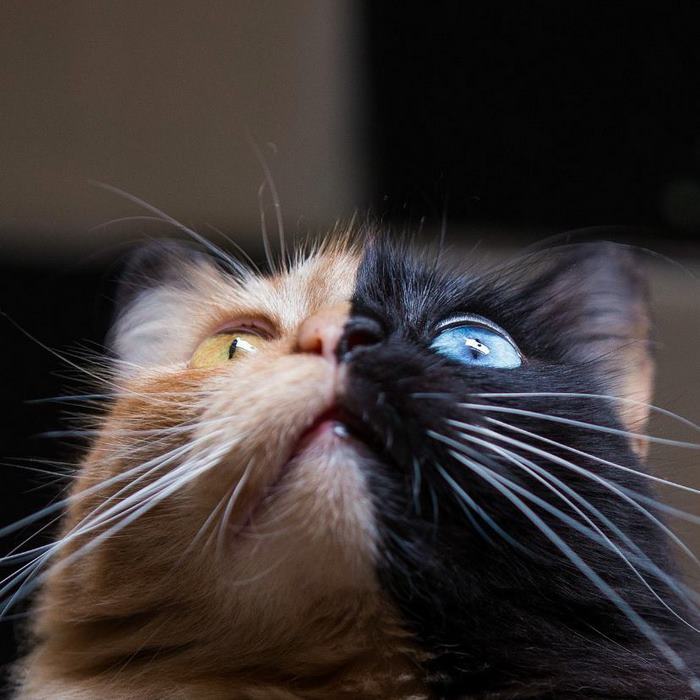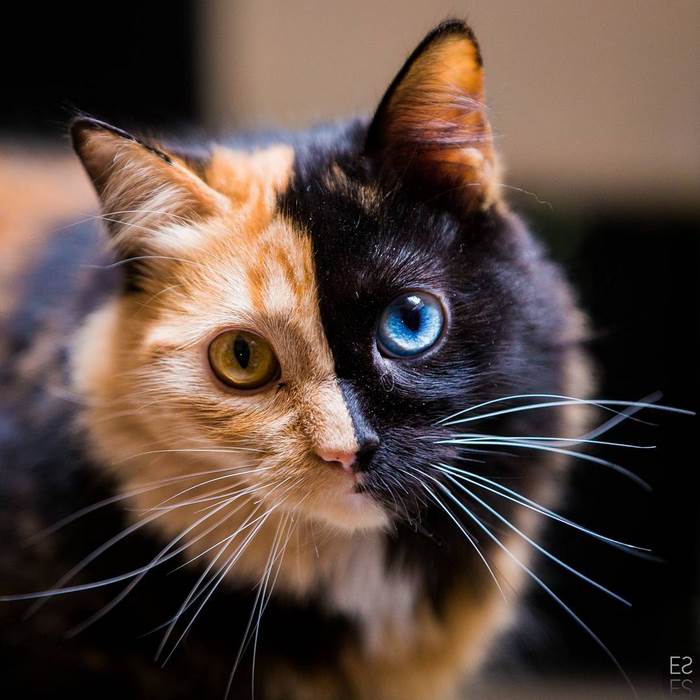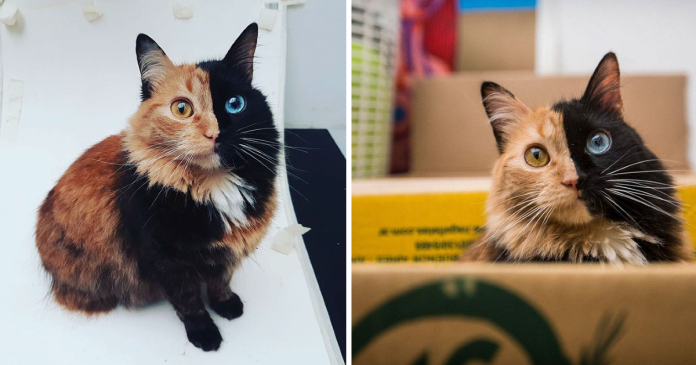The influence of social media has contributed to the Chimera cat’s meteoric rise in popularity. This intriguing and enigmatic cat, though, has a long and storied past. This cat has all the makings of a beloved pet for any animal lover. Read on to learn everything there is to know about Chimera cats.
The magnificent Chimera cat is the product of an extremely unusual genetic anomaly. They have a remarkable appearance due to the fact that their fur is of contrasting colors on each side of their faces. Quite a few Chimera cats have an almost straight line separating the two colors.


Intriguingly, the mythology of Greece is rich with references to Chimera cats. Greek mythology introduces us to the Chimera, a monster with a serpentine tail, a goat body, and a lion’s head.
Among felines, chimera cats are among the most exquisitely marked. A lot of people are curious about how they got their marks and if it was deliberate breeding to make them look that way.


The cells that make up a Chimera cat come from two separate embryos that fuse together during the early phases of gestation. The manifestation of this genetic combination, however, will vary from cat to cat. Color variances can be subtle in some people from birth, while in others they can be so extreme that you end up with the famous Chimera effect.


I couldn’t agree more—what a stunning feline! In particular, her blue eyes stand out like a valuable gem; they’re stunning, vibrant, and completely different from her other eye color. As it descends her torso and reaches her front legs, the chimerism color split is reversed on both sides.


As the adorable feline goes about her daily existence, oblivious to the fact that she has become famous and beloved by cat lovers all around the globe, Quimera’s Instagram account continues to grow in popularity. Take a look at her!


They have a particular genetic makeup that makes them more susceptible to certain diseases and disorders that can reduce their lifespan. Some cognitive and developmental delays, decreased bone mineral content, and increased body fat are all symptoms of the XXY syndrome, which makes XXY cats more likely to be overweight.






